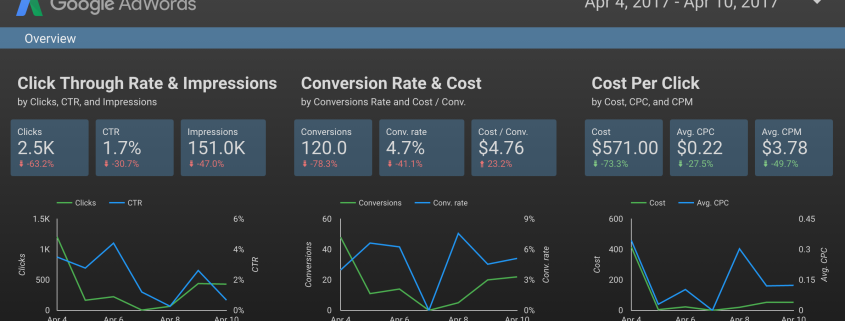Data analytics for better decision-making
In order to run your business, you must make decisions. Every day, consciously and unconsciously, you are evaluating situations and selecting a path to move forward. Whether you are concerned with restocking inventory, scheduling employee shifts, or predicting future sales, these decisions can all be improved with data analytics.
What if I don’t have data?
If you have a website, you have data! If you have website analytics set up, then every time someone finds you in a Google search or clicks on your web site, anonymous data is collected about them: where they are located, which pages they visited, how long they were on each page, and when they left your site. The easiest way to set up this data collection is by installing the free Google Analytics tool. In fact, you probably have it installed.
Besides website data, you may have data in your accounting system, your point-of-sales system, or even data that manually maintain in spreadsheets.
Another source of data that may be relevant is external, freely-available data. Examples of this include US Census data, weather data, and freely available research. A great place to look for open data sets is the dataset repository on Kaggle.com.
How much data do I need?
 According to Douglas Hubbard, you can improve your decision-making dramatically with as little as five pieces of data! In his book, How To Measure Anything, Hubbard explains that knowing just a little more than you previously did about a decision area can yield big improvements in outcomes.
According to Douglas Hubbard, you can improve your decision-making dramatically with as little as five pieces of data! In his book, How To Measure Anything, Hubbard explains that knowing just a little more than you previously did about a decision area can yield big improvements in outcomes.
In an article written for Analytics Magazine, Hubbard explains it this way:
A client or reader who says, “I would like to measure this but we just don’t have enough data” is very likely making a series of erroneous assumptions. As in the previous point on statistical significance, managers may seriously underestimate how much uncertainty reduction they get from a small amount of data. In fact, we have never seen anyone who made this claim who had actually calculated the uncertainty reduction from a given set of data and computed the value of it to the decision, to ascertain that the uncertainty reduction had no value. Managers also underestimate how much data they really have. One example of this, discussed in the third edition of the book, is the “uniqueness fallacy.” This is the tendency to believe that only highly similar if not identical examples are informative.
How Do I Get Started with Data Analytics?
To get started with data-driven decision-making, start by identifying the decisions you regularly make that could be improved. How important are those decisions? What impact do they have on your bottom line? Once you know the decisions you want to improve, then think about what kinds of data would help you make your decision. Is it internal data? Is something available externally for free or for sale?
Once you know the decisions and the appropriate data, it is time to get the right talent working on it. While some of the analysis may be simple enough to analyze in a spreadsheet or chart, working with data analytics professionals can yield even better results.
What kinds of analysis can a professional do? Stay tuned to future blog posts!


